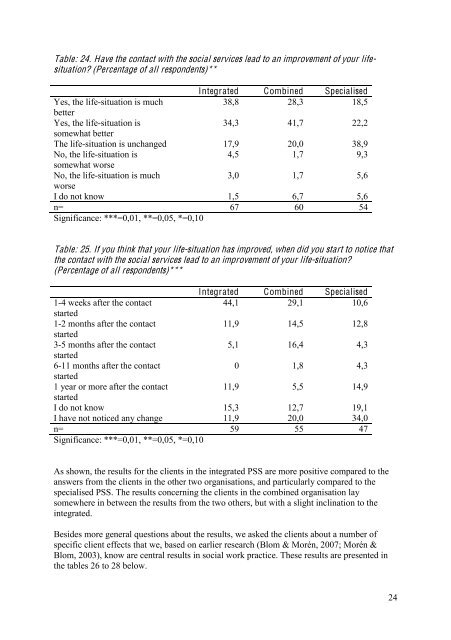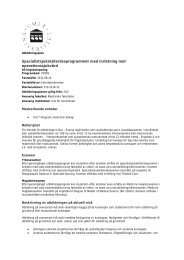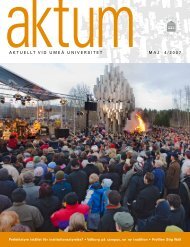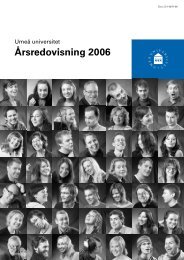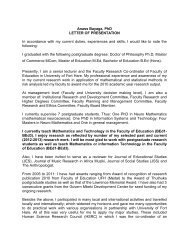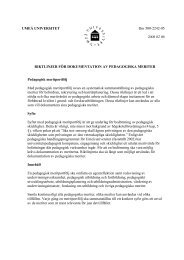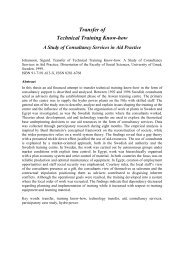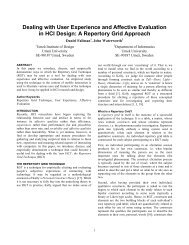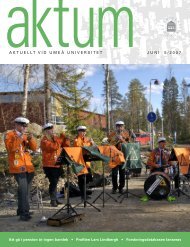Organisational Structure as Barrier or Support in the Personal Social ...
Organisational Structure as Barrier or Support in the Personal Social ...
Organisational Structure as Barrier or Support in the Personal Social ...
Create successful ePaper yourself
Turn your PDF publications into a flip-book with our unique Google optimized e-Paper software.
Table: 24. Have <strong>the</strong> contact with <strong>the</strong> social services lead to an improvement of your lifesituation?(Percentage of all respondents)**Integrated Comb<strong>in</strong>ed SpecialisedYes, <strong>the</strong> life-situation is much38,8 28,3 18,5betterYes, <strong>the</strong> life-situation is34,3 41,7 22,2somewhat betterThe life-situation is unchanged 17,9 20,0 38,9No, <strong>the</strong> life-situation is4,5 1,7 9,3somewhat w<strong>or</strong>seNo, <strong>the</strong> life-situation is much3,0 1,7 5,6w<strong>or</strong>seI do not know 1,5 6,7 5,6n= 67 60 54Significance: ***=0,01, **=0,05, *=0,10Table: 25. If you th<strong>in</strong>k that your life-situation h<strong>as</strong> improved, when did you start to notice that<strong>the</strong> contact with <strong>the</strong> social services lead to an improvement of your life-situation?(Percentage of all respondents)***Integrated Comb<strong>in</strong>ed Specialised1-4 weeks after <strong>the</strong> contact44,1 29,1 10,6started1-2 months after <strong>the</strong> contact11,9 14,5 12,8started3-5 months after <strong>the</strong> contact5,1 16,4 4,3started6-11 months after <strong>the</strong> contact0 1,8 4,3started1 year <strong>or</strong> m<strong>or</strong>e after <strong>the</strong> contact11,9 5,5 14,9startedI do not know 15,3 12,7 19,1I have not noticed any change 11,9 20,0 34,0n= 59 55 47Significance: ***=0,01, **=0,05, *=0,10As shown, <strong>the</strong> results f<strong>or</strong> <strong>the</strong> clients <strong>in</strong> <strong>the</strong> <strong>in</strong>tegrated PSS are m<strong>or</strong>e positive compared to <strong>the</strong>answers from <strong>the</strong> clients <strong>in</strong> <strong>the</strong> o<strong>the</strong>r two <strong>or</strong>ganisations, and particularly compared to <strong>the</strong>specialised PSS. The results concern<strong>in</strong>g <strong>the</strong> clients <strong>in</strong> <strong>the</strong> comb<strong>in</strong>ed <strong>or</strong>ganisation laysomewhere <strong>in</strong> between <strong>the</strong> results from <strong>the</strong> two o<strong>the</strong>rs, but with a slight <strong>in</strong>cl<strong>in</strong>ation to <strong>the</strong><strong>in</strong>tegrated.Besides m<strong>or</strong>e general questions about <strong>the</strong> results, we <strong>as</strong>ked <strong>the</strong> clients about a number ofspecific client effects that we, b<strong>as</strong>ed on earlier research (Blom & M<strong>or</strong>én, 2007; M<strong>or</strong>én &Blom, 2003), know are central results <strong>in</strong> social w<strong>or</strong>k practice. These results are presented <strong>in</strong><strong>the</strong> tables 26 to 28 below.24


